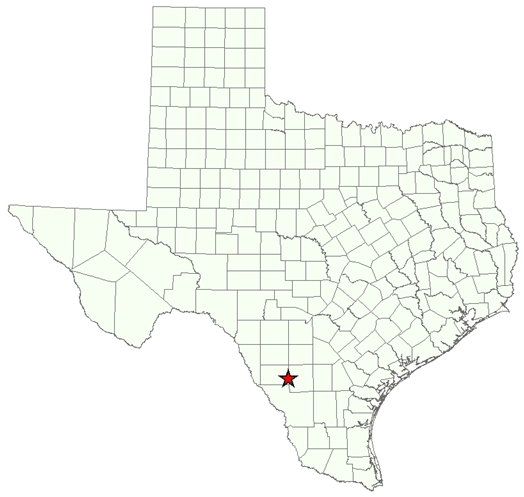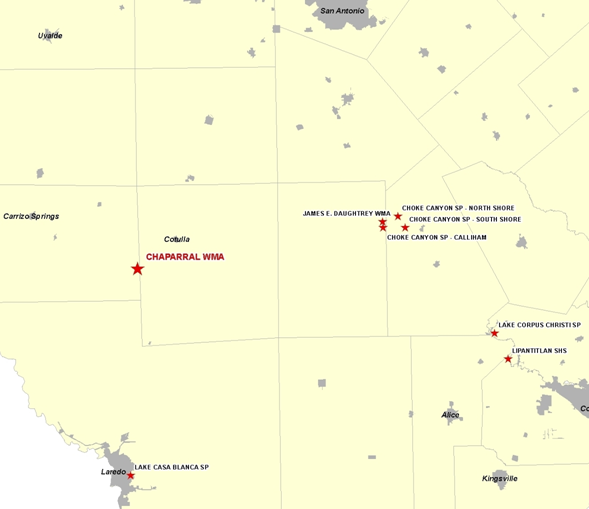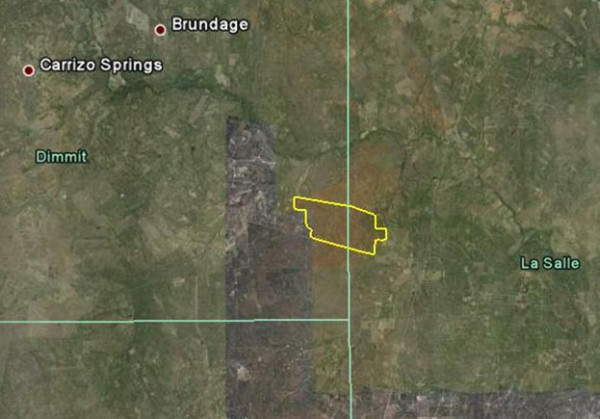Executive Session
Wednesday, May 22, 2013
9 a.m.
Texas Parks and Wildlife Department
Commission Hearing Room
4200 Smith School Road, Austin, TX 78744
Chairman T. Dan Friedkin
Carter Smith, Executive Director
- Red Snapper—Discuss Recent Actions by the Gulf of Mexico Fishery Management Council related to the Management of Red Snapper Stocks within the Exclusive Economic Zone (EEZ) off of Texas—Ann Bright
- Update on Surface Use Negotiations—Dimmit and La Salle Counties Oil and Gas Development at the Chaparral Wildlife Management Area—Ross Melinchuk
Work Session Item No. 1
Presenter:
Ann Bright
Executive Session
Red Snapper
May 22, 2013
I. Executive Summary: Attorneys from TPWD and the Office of the Attorney General (OAG) will brief the Commission regarding the lawsuit recently filed by TPWD and the Louisiana Department of Wildlife and Fisheries (LDWF) challenging an emergency rule enacted by the National Marine Fisheries Service severely restricting the harvest of red snapper in the Exclusive Economic Zone (EEZ) off Texas, Louisiana and Florida. (The State of Texas, et al. v. Roy E. Crabtree, et al., Civil Action No. 13-cv-00070, in the United States District Court for the Southern District of Texas, Brownsville Division.)
II. Discussion: The federal Magnuson-Stevens Fishery Conservation and Management Act established eight fishery management councils to help manage the fisheries in the Exclusive Economic Zone (EEZ). Texas is a member of the Gulf of Mexico Fishery Management Council (GMFMC), which consists of 17 voting members comprised of state fish and wildlife agency, university, commercial and recreational fishery representatives from the States of Texas, Louisiana, Mississippi, Alabama, and Florida, and the National Marine Fisheries Service (NMFS). These Councils are administered by NMFS, an agency within the National Oceanic and Atmospheric Administration (NOAA) of the Department of Commerce. Governor Perry nominates members to the Council as do the Governors from the other Gulf States. In addition to the state fish and wildlife agency representation, each state has at least one other representative.
For several years, the red snapper recreational regulations in Texas state waters (set by the Texas Parks and Wildlife Commission) have been different than the federal regulations in the EEZ. Although some at NMFS and members of the public have raised concerns about this inconsistency, Texas has operated with one standard in Texas Territorial Sea (TTS) (4 fish daily bag limit, 15 inch minimum size limit, open year around) and another in the EEZ (2 fish bag limit, 16 inch minimum size limit).
On Friday February 8, 2013, at a meeting of the GMFMC, a motion was narrowly passed to initiate an emergency rulemaking that would essentially allow a significant reduction in red snapper harvest in the EEZ in those states that have not adopted regulations consistent with the federal regulations. As published in the federal register on March 25, the emergency rule would empower the NMFS southeast regional administrator to reduce the red snapper season in federal waters off Texas, Louisiana, and Florida.
On April 18, the Gulf council voted 8 to 7 to overturn the emergency rule, in effect reversing the February 8 vote. However, it is unknown if NMFS will seek to repeal the emergency rule. Therefore, on April 22, 2013, TPWD and LDWF joined together to file a lawsuit in United States District Court in Brownsville, Texas challenging the emergency regulation. The federal court has been asked to expedite its consideration of the case so that a decision is reached before June 1.
TPWD and OAG attorneys will brief, advise and discuss the lawsuit with the Commission in executive (closed) session as authorized by the Open Meetings Act (Tex. Gov’t Code §551.071) to consult with attorneys from TPWD and the Office of the Attorney General.
Work Session Item No. 2
Presenter:
Ross Melinchuk
Executive Session
Update on Surface Use Negotiations – Dimmit and La Salle Counties
Oil and Gas Development at the Chaparral Wildlife Management Area
May 22, 2013
I. Executive Summary: Staff will brief the TPW Commission on the status of negotiations to protect the surface of the Chaparral Wildlife Management Area during proposed oil and gas exploration and recovery activities.
II. Discussion: The 15,200-acre Chaparral Wildlife Management Area (WMA) sits above the Eagle Ford shale geological formation, which is proving to be one of the richest oil and gas producing formations in North America. “Three-D” seismic surveys, horizontal drilling techniques and hydraulic fracturing, or “fracking” have made the exploitation of the Eagle Ford shale technically and economically productive, and extensive efforts are underway to tap the oil and gas resources of this formation throughout its range in south Texas.
The current holders of exploration and recovery rights under the WMA include Talisman Energy Inc., and Anadarko Petroleum Corporation. Oil and gas exploration and recovery operations are expected to permanently alter the WMA. Habitat for four state listed species, fish and wildlife values, thirty-plus years of intensive conservation research, public hunting and a variety of other recreational uses will be adversely affected.
TPWD staff continues to work with Talisman and Anadarko to draft Surface Use Agreements for exploration and recovery operations consistent with the TPWD’s mission to minimize adverse impacts to biological and recreational values.
Work Session Item No. 2
Exhibit A
Location of Chaparral WMA in LaSalle and Dimmit Counties

Work Session Item No. 2
Exhibit B
Vicinity Map for Chaparral WMA 55 miles north of Laredo

Work Session Item No. 2
Exhibit C
Site Map for the 15,200-Acre Chaparral WMA
